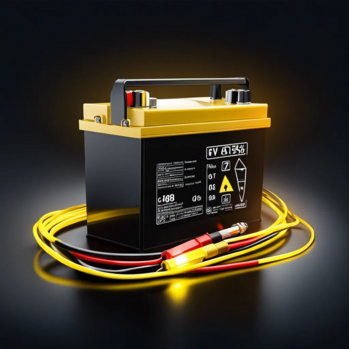What voltage should be on the battery when charging?

Battery plays a major role in operation of any electronic system, providing an energy source to launch the engine or to supply extra devices. Operating characteristics as well as cycle life depend on the correct process of charging, including setting the right voltage.
Main principles of charging
Batteries are designed for providing a stable voltage and current with different working modes of the equipment. To restate its charge, the charging methods used are constant voltage (CV) and constant current (CC). Modern chargers can combine both methods, adapting parameters according to battery condition.
Classification of batteries and specialties of charge
As of today, the following batteries are widespread:
- Lead acid batteries (liquid electrolyte) – most popular, available and simple in maintenance.
- Absorbent glass mat (AGM) batteries – use separators from fiberglass, which make them resistant to vibrations and low temperatures.
- Gel batteries – contain a gel electrolyte which prevents leakage and minimize losses from evaporation.
Every variation requires individual conditions of charge, which mainly result in recommended voltage level.
Recommended voltage levels for battery charge
Standard nominal voltage of most automobile batteries is 12V. However, during charging process, real voltage is higher and varies on battery types:
- Lead acid batteries – optimal range 13.8-14.4V. Such voltage allows to compensate for internal impedance and provides full charge.
- AGM batteries – permissible charging voltage up to 14.8V, thanks to their construction resistant to high voltage.
- Gel batteries – recommended lower voltage around 13.5-14.1V, caused by specialties of their internal structure and chemical reactions.
Temperature factors in the charging process
Temperature causes significant influence on the efficiency of the charging process and its safety. Chemical reactions inside the battery are slowed down with low temperatures, which requires compensation in increasing charging voltage. At the same time with high temperatures it is required to lower the charging voltage to prevent battery destruction.
Modern chargers are equipped with the function of temperature compensation, automatically correcting voltage:
With high temperatures, voltage lowers about 2-3mV for every degree above normal. In low temperatures, voltage rises, providing necessary charging current and restoration of capacity.
Accounting for discharge level of the battery
Charging voltage also depends on the discharge level of the battery:
- Deeply discharged batteries: require gradual and careful raise of initial charging voltage to avoid damage of the plates and internal overheat.
- Moderately discharged batteries: permit an initial higher charging voltage for fast activation and charge restoration.
The correct approach to charging allows you to avoid sulfation of the plates and maintain the battery in working condition throughout its entire service life.
AGM batteries and maintenance-free batteries charging features
Modern AGM batteries and maintenance-free batteries require strict adherence to charging conditions:
AGM batteries: require precise control of the charging voltage. Long-term excess of the upper voltage threshold leads to overheating and destruction of the battery structure.
Maintenance-free batteries: have limited capabilities for monitoring and replenishing the electrolyte. They can withstand high charging currents, but require precise adherence to the charging voltage to prevent damage and gas emissions.
Selecting and using chargers
- The charger must match the battery type and provide the required charging parameters:
- Automatic chargers: switch between fast and maintenance charging modes, preventing overcharging of the battery.
- Manual devices: require constant operator supervision to adjust the charging parameters.
- Combination models: provide flexibility, offering manual and automatic control modes.
It is recommended to check the compatibility of the charger with the battery by type and nominal characteristics to prevent damage to the battery.
Rules for connecting the charger
Correct connection eliminates the risk of short circuit and ensures a safe charging process:
- Check the polarity: the charger plus to the battery plus, the minus to the minus.
- Securely fasten the contacts: eliminate possible sparks.
- When using manual control, regularly monitor the voltage and charging time.
After the battery is fully charged, the charger should automatically switch to maintenance mode or be manually disconnected to avoid overloading the battery.
Monitoring the battery condition
Regular monitoring allows you to promptly detect deterioration in the battery condition:
- Measuring voltage with a multimeter: the normal voltage of a fully charged battery is 12.6–12.8 V.
- Checking the density of the electrolyte: carried out with a hydrometer for classic batteries.
- Signs of deterioration of the battery:
- Idle voltage less than 12.4 V.
- Difficulty starting the engine.
Prolonged charging without reaching the nominal voltage.
To prevent problems, regular checks and preventive maintenance are recommended: replenishing the electrolyte (if possible), avoiding deep discharge and timely charging.
Correctly selected charging voltage, taking into account external factors and choosing the right equipment allow you to maintain batteries in optimal condition and extend their service life, ensuring stable operation of electronic devices and systems.
